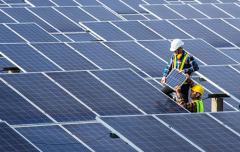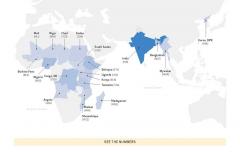Energy Efficiency: RISE Energy Efficiency vs Renewable Energy

Quick Facts
More than three-quarters of all countries covered by Regulatory Indicators for Sustainable Energy (RISE) score well on the legal framework for renewable energy, compared to 9 percent that score well on having energy efficiency mandates and incentives for utilities in place.
High performers on RISE’s energy efficiency indicator often have strong regulations in place to support renewable energy deployment. However, the average RISE score for energy efficiency is more than ten percentage points below that for renewable energy.
Official renewable energy targets have become nearly universal, with some form of public commitment in 93 percent of countries covered by the RISE indicators.
Most of the world’s largest energy consumers score in the top tier of the RISE renewable energy indicator indicating strong policy frameworks are in place.
Context
- RISE offers policy makers and investors detailed country- level insights on the policy and regulatory environment for sustainable energy across 111 countries globally.
- RISE shines a light on the need to attach greater political and policy priority to energy efficiency. With the exception of the highest income countries, many countries have few or no policies in place to support the adoption of ambitious energy efficiency measures. In contrast, RISE highlights strong progress and broad uptake in advancing renewables policy across many countries.
- Among the countries where wind and solar power account for at least 5 percent of total electricity generated in 2014, more than 80 percent have completed a grid integration study to understand how to integrate variable renewable energy.
- India and China together represent more than a third of the global population. Driven in part by clean air imperatives and low-carbon development ambitions they both have high scores on RISE for renewable energy and energy efficiency. China’s 13th Five-Year Plan sets a 15 percent target of non- fossil energy as a share of total final energy consumption by 2020, and a 15 percent reduction in energy intensity compared to 2015 levels. India has placed energy conservation at the heart of its development strategy through multiple initiatives such as “Unnat Jeevan By Affordable LEDs and Appliances for All”, the world’s largest zero-subsidy LED bulb program for domestic consumers.
NOTE: Regulatory Indicators for Sustainable Energy (RISE) is a suite of indicators that assesses the legal and regulatory environment for investment in sustainable energy.
SOURCE: Regulatory Indicators for Sustainable Energy (RISE), World Bank Group, 2017. Data extracted from http://rise.esmap.org/ on 06/23/2017. World Development Indicators, World Bank Group, 2014.
Data Extracted from http://data.worldbank.org/indicator/SP.POP.TOTL?end=2014&name_desc=false&view=chart on 06/20/2017.
Related Heatmaps

Data analysis
16 Oct 2024
SEforALL Analysis of SDG7 Progress - 2024

Data analysis
18 Jul 2023
Chilling Prospects: Global Access to Cooling Gaps 2023

Data analysis
18 Jul 2023
Chilling Prospects: Policy progress in Cambodia with a region-leading National Cooling Action Plan

Data analysis
18 Jul 2023
Chilling Prospects: Innovative financing at CLASP
